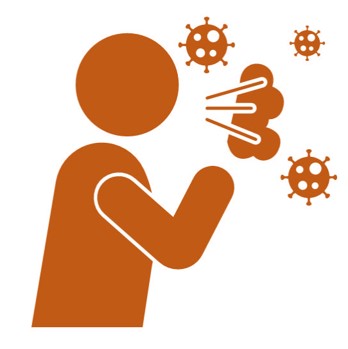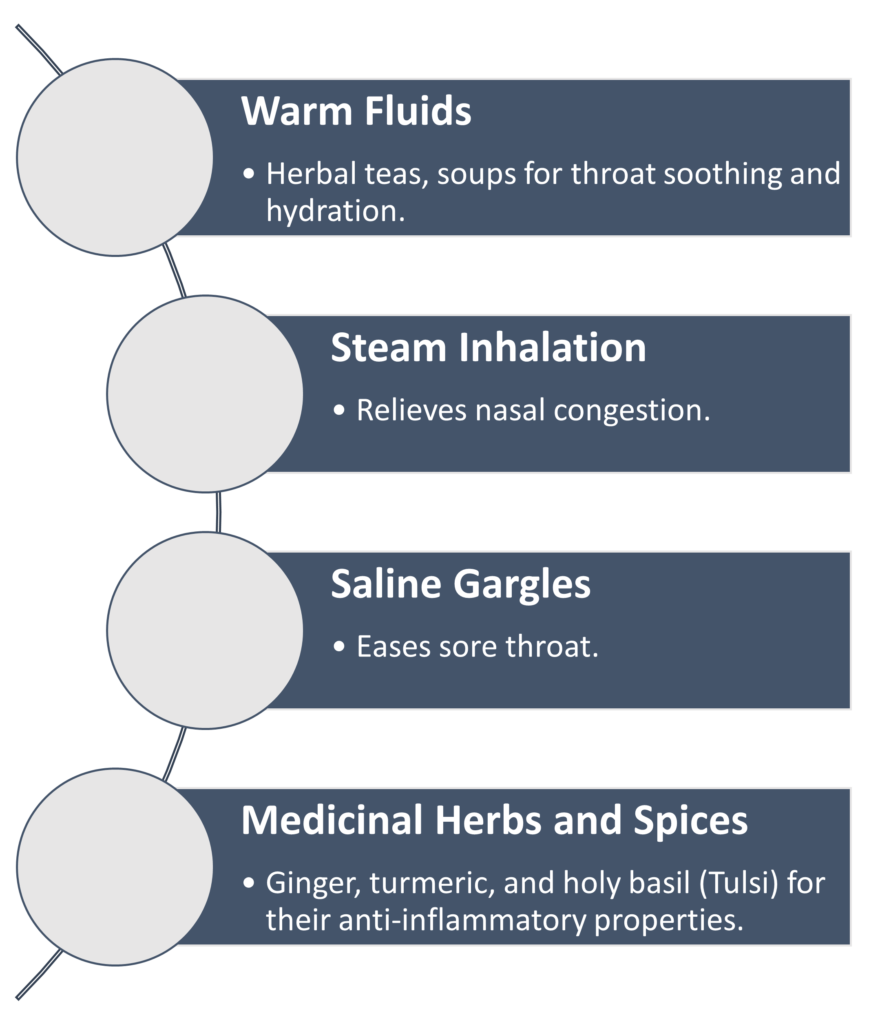
Seasonal influenza, commonly referred to as the flu, is a significant public health challenge globally, including in India. The flu is caused by influenza viruses that infect the respiratory tract, leading to symptoms such as fever, cough, sore throat, body aches, and fatigue.
Introduction
The landscape of seasonal flu in India has been evolving due to various factors, including changes in virus strains, population immunity, healthcare infrastructure, and public health policies. Influenza viruses are categorized into four types: A, B, C, and D. Types A and B are the most common causes of seasonal flu. Influenza A viruses are further subtyped based on hemagglutinin (H) and neuraminidase (N) surface proteins. The ability of these viruses to undergo antigenic drift and shift leads to the emergence of new strains, posing a challenge for public health efforts aimed at prevention and control.
In India, the burden of seasonal flu is influenced by diverse climatic conditions, population density, and socio-economic factors. The Indian subcontinent experiences varying flu seasons, with peaks occurring in the monsoon and winter months.
Prevalence
The prevalence of seasonal influenza in India varies widely across different regions and seasons. According to recent epidemiological studies, the incidence of flu cases peaks during the monsoon season in the western and southern parts of India, while the northern and eastern regions see a rise in cases during the winter months. The overall prevalence of flu-like illnesses can be as high as 10-15% during peak seasons, with significant morbidity and mortality, particularly among vulnerable populations such as children, the elderly, and those with underlying health conditions.
Data from the Integrated Disease Surveillance Programme (IDSP) and the National Centre for Disease Control (NCDC) indicate a substantial annual burden of influenza-associated hospitalizations and outpatient visits. Surveillance data also suggest a gradual increase in the circulation of influenza B viruses alongside the traditionally dominant influenza A viruses. The increased use of diagnostic tools, such as real-time polymerase chain reaction (RT-PCR) tests, has improved the accuracy of influenza detection, contributing to better epidemiological understanding and targeted public health interventions.
| Region | Peak Season | Estimated Prevalence (%) |
|---|---|---|
| Western India | Monsoon | 12-15 |
| Southern India | Monsoon | 10-13 |
| Northern India | Winter | 8-10 |
| Eastern India | Winter | 7-9 |
Epidemiology
The epidemiology of seasonal influenza in India reflects a complex interplay of viral dynamics, host immunity, and environmental factors. The continuous circulation of influenza viruses, coupled with the periodic introduction of new strains, results in varying patterns of infection and disease burden across different seasons and regions.
Seasonal influenza epidemics in India are characterized by the predominance of influenza A (H1N1) and A (H3N2) subtypes, with occasional surges in influenza B cases. The antigenic variation in these viruses, driven by antigenic drift, leads to periodic outbreaks and necessitates regular updates to the composition of the seasonal flu vaccine.
Recent studies have highlighted the role of climatic factors, such as temperature and humidity, in influencing the transmission dynamics of influenza viruses. For instance, the higher humidity levels during the monsoon season facilitate the spread of respiratory droplets, contributing to increased flu activity in western and southern India. Conversely, the cooler temperatures during the winter months in northern and eastern India create favorable conditions for viral persistence and transmission.
The demographic structure of the Indian population, with a significant proportion of young children and elderly individuals, also impacts the epidemiology of seasonal flu. Children serve as primary vectors for virus transmission, while older adults and individuals with comorbidities are at higher risk of severe disease outcomes. This demographic distribution necessitates targeted vaccination and public health strategies to mitigate the impact of seasonal influenza.

Mechanism and Cause
The pathogenesis of seasonal influenza involves the infection of respiratory epithelial cells by influenza viruses, leading to an inflammatory response and clinical symptoms. The primary mode of transmission is through respiratory droplets generated by coughing and sneezing, although indirect transmission via contaminated surfaces can also occur.
Influenza viruses bind to sialic acid receptors on the surface of respiratory epithelial cells, facilitating viral entry and replication. The release of pro-inflammatory cytokines and chemokines results in the characteristic symptoms of fever, cough, and myalgia. The host immune response, including the production of neutralizing antibodies and cytotoxic T lymphocytes, plays a crucial role in controlling the infection and limiting disease severity. The continuous antigenic evolution of influenza viruses, driven by mutations in the hemagglutinin and neuraminidase proteins, poses a challenge for vaccine development and efficacy. Antigenic drift, characterized by gradual genetic changes, leads to the emergence of new virus strains that can evade pre-existing immunity. This necessitates annual updates to the seasonal flu vaccine composition based on global surveillance data and predictive modeling.

Differential Diagnosis
The clinical presentation of seasonal influenza overlaps with other respiratory infections, making differential diagnosis essential for appropriate management. Common differential diagnoses include COVID-19, respiratory syncytial virus (RSV) infection, adenovirus infection, and bacterial pneumonia. The overlapping symptoms of fever, cough, and respiratory distress necessitate the use of specific diagnostic tests to confirm influenza infection and rule out other pathogens.
The emergence of COVID-19 has further complicated the diagnostic landscape, as both influenza and SARS-CoV-2 can cause similar clinical syndromes. Co-infections with influenza and COVID-19 have been reported, highlighting the importance of comprehensive diagnostic approaches that include multiplex PCR assays capable of detecting multiple respiratory pathogens simultaneously.
| Condition | Key Symptoms | Diagnostic Tests |
|---|---|---|
| COVID-19 | Fever, cough, loss of taste/smell | RT-PCR, Antigen test |
| Respiratory Syncytial Virus (RSV) Infection | Cough, wheezing, nasal congestion | PCR, antigen detection |
| Adenovirus Infection | Conjunctivitis, sore throat, fever | PCR, culture |
| Bacterial Pneumonia | High fever, productive cough, chest pain | Chest X-ray, sputum culture |
Pharmacological Management
The pharmacological management of seasonal influenza involves antiviral therapy and supportive care. Neuraminidase inhibitors, such as oseltamivir and zanamivir, are the mainstay of antiviral treatment, reducing the duration of symptoms and preventing complications when administered early in the course of illness. Baloxavir marboxil, a cap-dependent endonuclease inhibitor, represents a newer class of antiviral agents with a single-dose regimen, offering an alternative for influenza treatment.
Supportive care includes the use of antipyretics for fever control, hydration, and rest. In severe cases, particularly among high-risk individuals, hospitalization and intensive care support may be required. Antibiotics are indicated only for secondary bacterial infections, as inappropriate use can contribute to antibiotic resistance.

| Medication | Class | Mechanism of Action | Administration Route |
|---|---|---|---|
| Oseltamivir | Neuraminidase inhibitor | Inhibits release of viral particles | Oral |
| Zanamivir | Neuraminidase inhibitor | Inhibits release of viral particles | Inhalation |
| Baloxavir marboxil | Cap-dependent endonuclease inhibitor | Inhibits viral RNA replication | Oral |
Home Remedies
Home remedies and traditional practices play a significant role in the management of mild influenza symptoms in India. Common remedies include the consumption of warm fluids, such as herbal teas and soups, to soothe the throat and maintain hydration. Steam inhalation and saline gargles are frequently recommended to relieve nasal congestion and sore throat.
The use of medicinal herbs and spices, such as ginger, turmeric, and holy basil (Tulsi), is rooted in traditional Ayurvedic practices and is believed to have anti-inflammatory and immune-boosting properties. While these remedies can provide symptomatic relief, they should be used in conjunction with evidence-based medical treatments and not as a substitute for antiviral therapy.

| Remedy | Description | Claimed Benefits |
|---|---|---|
| Ginger Tea | Tea made from fresh ginger slices | Anti-inflammatory, soothes throat |
| Turmeric Milk | Warm milk with turmeric powder | Anti-inflammatory, boosts immunity |
| Holy Basil (Tulsi) Tea | Tea made from holy basil leaves | Antimicrobial, reduces respiratory symptoms |
Prognosis
The prognosis of seasonal influenza varies depending on the patient’s age, underlying health conditions, and access to medical care. Most healthy individuals recover from influenza within one to two weeks without complications. However, certain groups, including young children, the elderly, pregnant women, and individuals with chronic diseases, are at higher risk of severe outcomes, including pneumonia, exacerbation of underlying conditions, and death.
Early antiviral treatment and vaccination are key strategies in improving outcomes and reducing the burden of severe disease. Public health efforts aimed at increasing vaccination coverage, particularly among high-risk groups, are essential for mitigating the impact of seasonal influenza in India.
The landscape of seasonal influenza in India is continually evolving, influenced by changes in viral strains, population immunity, and public health interventions. Understanding the epidemiological trends, mechanisms of disease, and effective management strategies is crucial for reducing the burden of influenza and improving public health outcomes. Continued surveillance, research, and public health initiatives are necessary to address the challenges posed by seasonal influenza and protect vulnerable populations in India.



Fascinating perspective! The Sprunki Pyramix experience transforms gaming. Sprunki Pyramix brilliantly combines complexity with accessibility. The way Sprunki Pyramix empowers creative thinking is remarkable.
Roulette strategies often fall short, but platforms like Jiliph bring AI-driven insights that could shift the odds. Their user-friendly design and smart tech make them a standout in online gaming.
Understanding odds is crucial in gambling – it’s the line between luck and strategy. Platforms like JLJLPH offer diverse games, but always play responsibly and with a clear mindset.